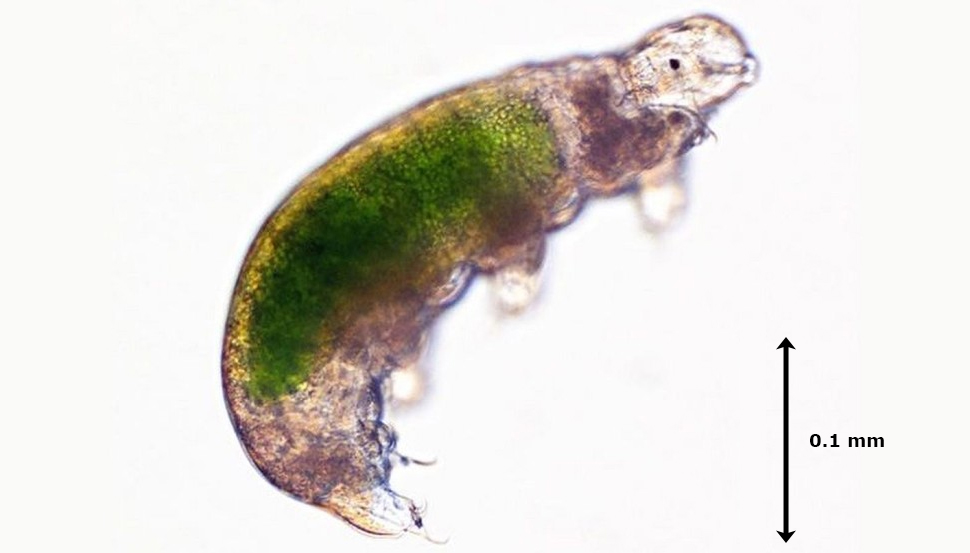
18th February 2016 Animals revived after being in a frozen state for over 30 years A study in Cryobiology describes how microscopic tardigrades were successfully revived, and reproduced, after being frozen for over 30 years.
This week, it is reported that tardigrades (water bears) were successfully revived and reproduced after having been frozen for 30 years. A moss sample collected from Antarctica in November 1983, then stored at -20°C (-4°F), was thawed in May 2014. Two individuals and a separate egg retrieved from the thawed sample were revived, thereby providing the longest record of survival for tardigrades as animals or eggs. Subsequently, one of the revived tardigrades and the hatchling repeatedly reproduced after recovering from their long-term cryptobiosis. The previous records for tardigrade revival after long-term storage were 9 years for eggs in dried storage at room temperature and 8 years for dried storage under a frozen condition. These animals have the ability to temporarily shut down their metabolic activities, induced by certain physiological stimuli including desiccation and freezing, which is called "cryptobiosis." Tardigrades have a typical lifespan of up to six months – meaning these specimens survived at least 61 times longer than they normally would. So in terms of human years, that is equivalent to a U.S. adult male being frozen today and waking up around 6800 AD.
In previous studies on the long-term survival of small cryptobiotic animals, survival has been the primary observation, whereas the recovery of animals or their subsequent reproduction (i.e. indicating long-term viability) has generally not been reported. Thus, the recovery conditions and reproduction following the revival of tardigrades, from an Antarctic moss sample frozen for 30 years, were documented to help further understand the mechanisms underlying their long-term survival in cryptobiosis. The tardigrades were approximately 0.2 mm long, which is barely visible to the naked eye. After 30 years of storage, the moss containing the animals was defrosted at 3°C for 24 hours, then soaked in water for an additional 24 hours. Two individuals and one egg were collected from the moss sample and reared on agar plates, with algae provided as food. One of the tardigrades and the juvenile that hatched from the revived egg went on to continuously reproduce. On the first day after rehydration, one of the revived tardigrades slightly moved its fourth pair of legs. The recovery process was slow, taking two weeks for this animal to crawl and eat. It laid 19 eggs, of which 14 hatched successfully. The time taken for the first egg laid after revival of this individual to hatch was almost double (19 days) the median time taken by all the eggs (9.5 days). The other revived tardigrade also moved its fourth pair of legs on the first day. However, it did not recover successfully and died 20 days after rehydration. The juvenile that hatched from a revived egg ate, grew, and reproduced without any obvious abnormality observed. It laid 15 eggs, of which 7 successfully hatched. The offspring were morphologically identified as Acutuncus antarcticus, a species endemic to Antarctica.
Possible damage accumulated over 30 years of cryptobiosis was indicated by the long recovery time required for the animals and the longer time required for the first egg laid after the revival to hatch. On the other hand, no obvious damage was observed in the specimen that hatched from the revived egg. "Our team now aims at unravelling the mechanisms underlying the long-term survival of cryptobiotic organisms by studying damage to tardigrades' DNA and their ability to repair it," said Megumu Tsujimto, lead researcher at the National Institute of Polar Research. His team's paper, "Recovery and reproduction of an Antarctic tardigrade retrieved from a moss sample frozen for over 30 years" appears in the February 2016 issue of Cryobiology.
Comments »
|








